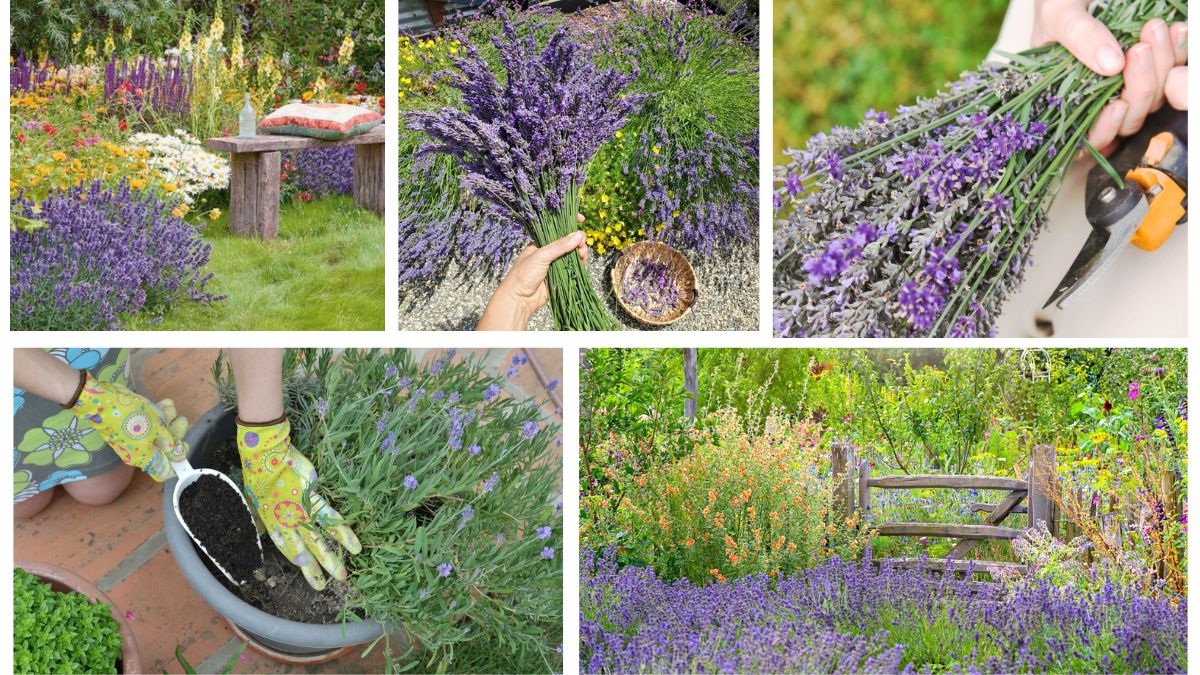Lavender is one of the world’s most beloved plants — famous for its beautiful, fragrant flowers, calming aroma, and wide range of uses in cooking, wellness, and home décor. Beyond its versatility, lavender is surprisingly easy to grow, making it a perfect choice for beginner gardeners looking to add charm, scent, and color to their outdoor or indoor spaces.
If you’ve ever dreamed of a garden corner filled with soft purple blooms swaying in the breeze, this guide is for you. In this article, we’ll cover everything you need to know about how to start growing lavender — from choosing the right variety to planting, care, and harvesting for years of sweet, aromatic success.
Why Grow Lavender?
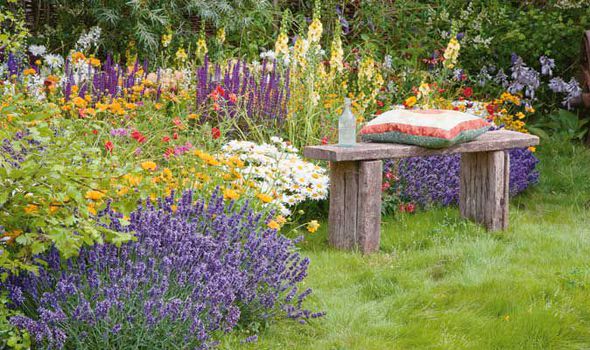
Lavender isn’t just a beautiful flower; it’s a plant packed with benefits:
- Visually stunning with shades of purple, pink, blue, and white.
- Emits a calming fragrance that reduces stress and improves sleep.
- Attracts pollinators like bees and butterflies.
- Naturally repels mosquitoes and insects.
- Can be used in teas, desserts, essential oils, and potpourri.
- Drought-tolerant and low maintenance once established.
No wonder lavender has been adored in Mediterranean gardens and modern backyards for centuries!
Best Lavender Varieties for Beginners
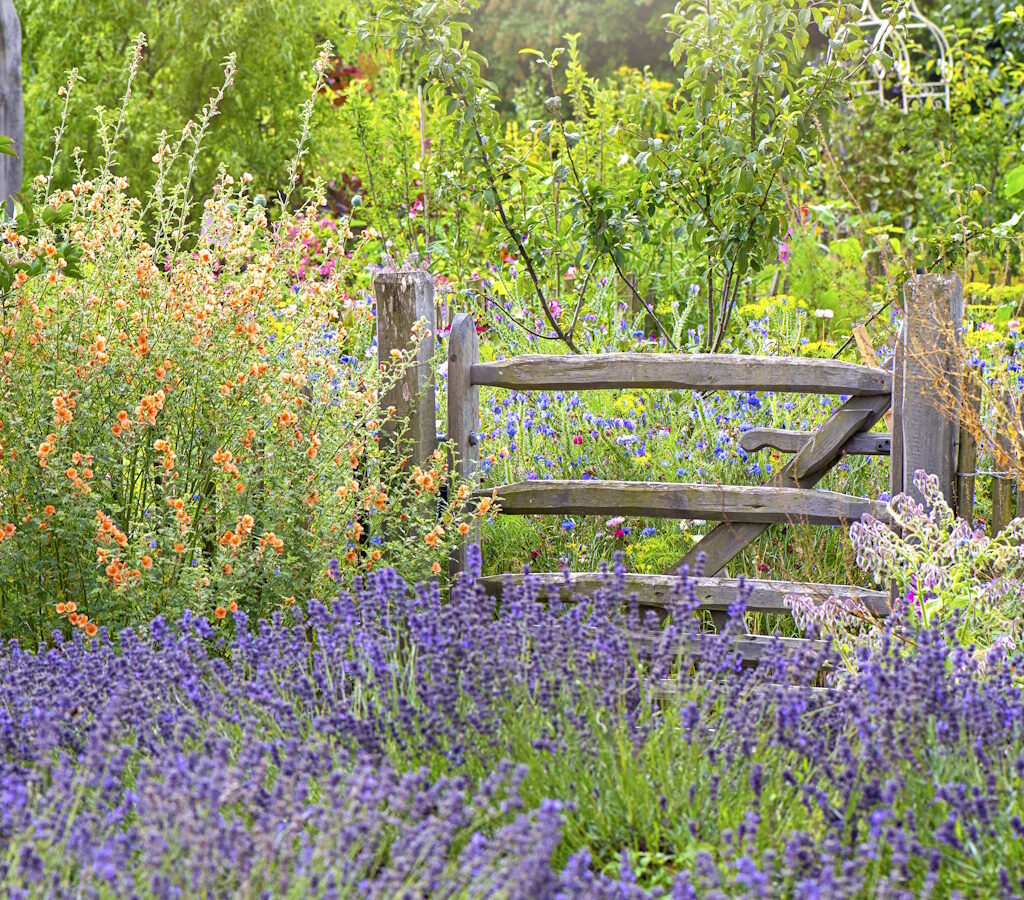
Not all lavender types are the same. It’s important to pick a variety that suits your local climate and intended use.
1. English Lavender (Lavandula angustifolia)
- Most cold-hardy.
- Rich fragrance.
- Great for culinary and aromatic uses.
- Popular cultivars: ‘Hidcote’, ‘Munstead’.
2. French Lavender (Lavandula dentata)
- Fragrant, serrated leaves.
- Best in warmer, Mediterranean climates.
- Ideal for hedges and decorative borders.
3. Spanish Lavender (Lavandula stoechas)
- Recognizable for its “rabbit ear” blooms.
- Thrives in hot, dry regions.
- Blooms early with distinct appearance.
4. Lavandin (Lavandula x intermedia)
- A hybrid of English and Portuguese lavender.
- Large plants with intense fragrance.
- Excellent for drying and oil extraction.
Ideal Growing Conditions for Lavender
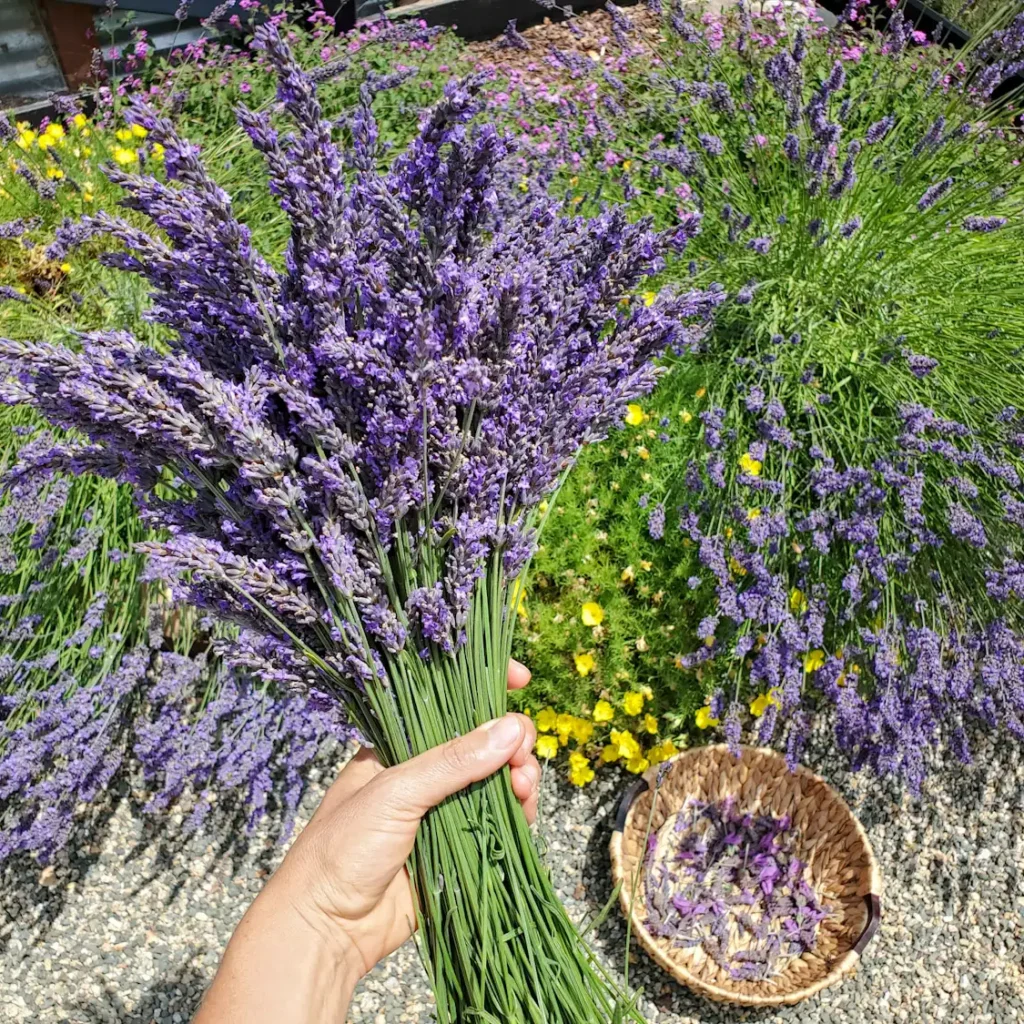
Understanding what lavender loves will give your plants the best start:
Sunlight
Lavender craves sun. Provide at least 6–8 hours of direct sunlight daily. The more sun, the stronger the fragrance and bloom production.
Soil
Well-draining soil is essential. Lavender dislikes wet feet and heavy clay.
Preferred Soil:
- Sandy or loamy with good drainage.
- Slightly alkaline to neutral (pH 6.5–7.5).
Tip: Amend heavy soils with sand, gravel, or perlite to improve drainage.
Temperature
Lavender thrives in temperatures between 15°C to 30°C (59°F to 86°F). While English lavender tolerates cooler climates, French and Spanish varieties prefer warmer conditions.
How to Plant Lavender: Step-by-Step
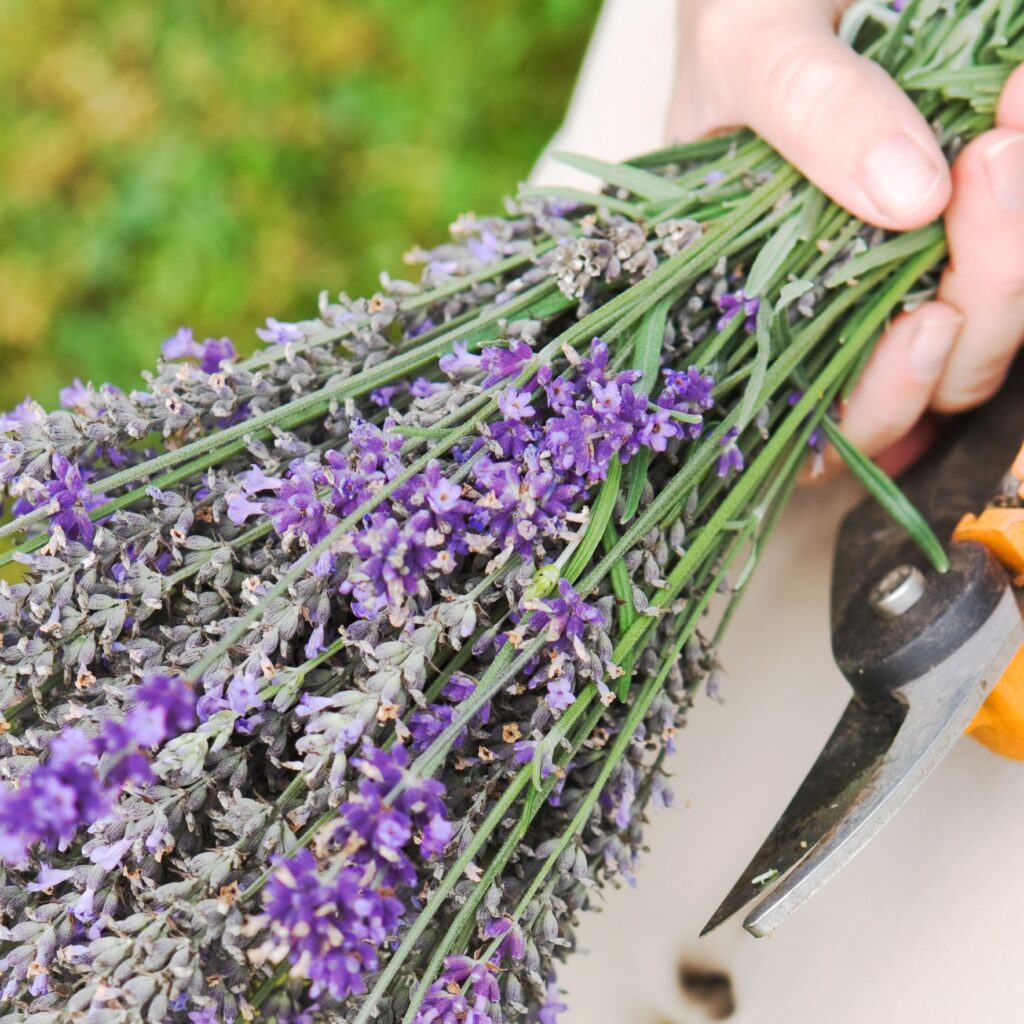
1. Choose the Right Spot
Select a sunny, airy location in your garden or balcony that receives full sun. Avoid shaded areas or spots prone to waterlogging.
2. Prepare the Soil
Loosen the soil to a depth of 12–18 inches. Mix in coarse sand or gravel for better drainage if necessary.
3. Space the Plants
Plant lavender 12–24 inches apart depending on the variety. This ensures good air circulation, preventing fungal issues.
4. Planting Depth
Plant at the same depth as the nursery container, ensuring the crown sits just above soil level.
5. Water Gently
After planting, water lightly to settle the soil around the roots.
Caring for Lavender Plants
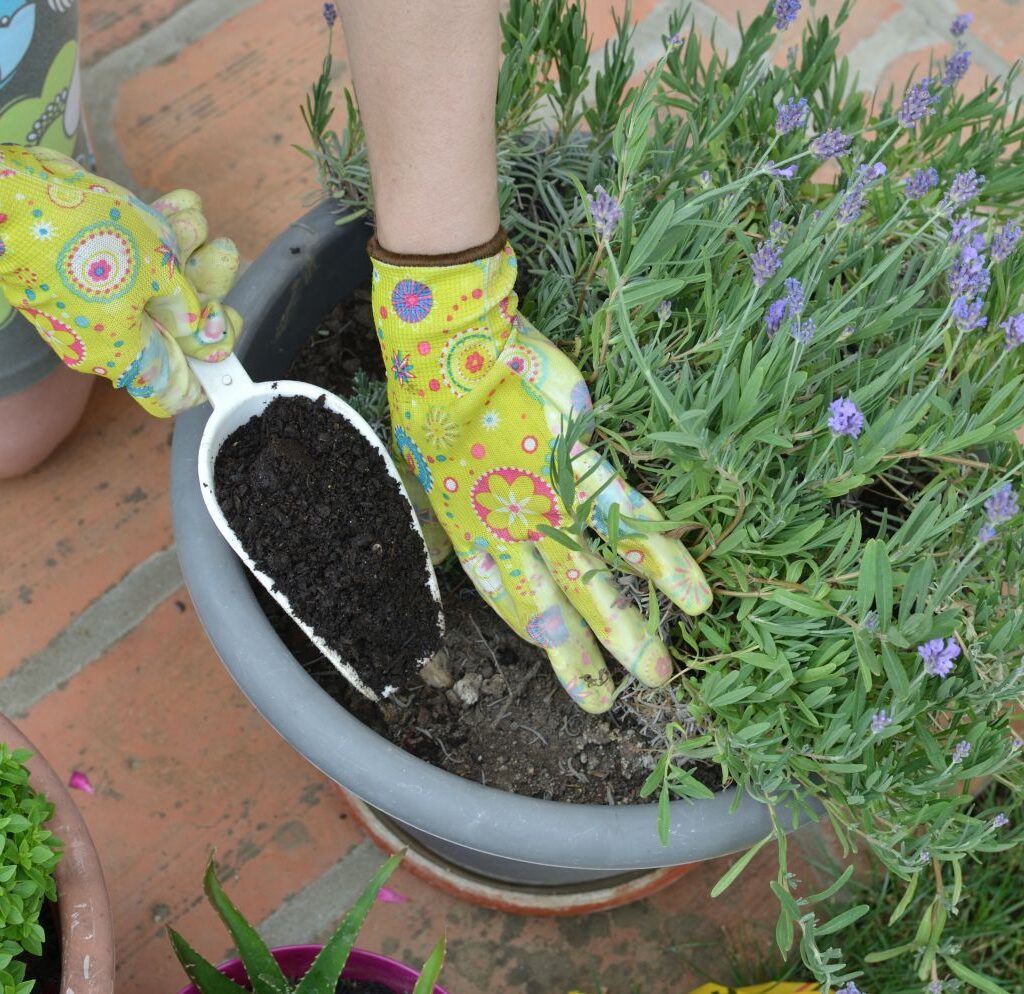
Once planted, lavender requires minimal maintenance — but a few simple steps will keep it thriving.
Watering
- Water newly planted lavender regularly for the first month.
- After establishment, water only when the soil is dry to the touch.
- Avoid overwatering, especially in humid climates.
Fertilizing
Lavender thrives in poor to average soils. Avoid nitrogen-heavy fertilizers which encourage foliage over blooms.
Feed with:
- A light application of compost in early spring.
- Organic, slow-release fertilizer if necessary.
Pruning
Regular pruning keeps lavender neat, bushy, and blooming.
- Prune after flowering or in early spring.
- Cut back about one-third of the plant, avoiding woody stems.
- Remove dead or faded flowers to promote fresh blooms.
Common Problems and How to Avoid Them
1. Root Rot
Caused by overwatering or poor drainage.
Solution: Plant in well-draining soil, avoid waterlogged conditions.
2. Fungal Infections
Usually a result of humidity and poor air circulation.
Solution: Space plants properly, prune regularly, avoid overhead watering.
3. Aphids and Spittlebugs
Can damage leaves and buds.
Solution: Spray with a mild soap solution or neem oil.
Growing Lavender in Pots
Lavender thrives in containers too — perfect for patios, balconies, or small spaces.
Potting Tips:
- Use a pot with excellent drainage holes.
- Choose a gritty potting mix (add sand or perlite).
- Position in a sunny spot.
- Water sparingly — let the soil dry out between waterings.
- Prune regularly to maintain shape.
When and How to Harvest Lavender
Lavender is best harvested when half to two-thirds of the buds have opened. This is when the fragrance is most intense.
Harvesting Steps:
- Use clean, sharp scissors or pruners.
- Cut stems 5–8 inches below the flower head.
- Harvest in the morning after the dew dries but before the midday heat.
Drying Lavender:
- Bundle stems together.
- Hang upside down in a cool, dry, well-ventilated area.
- Once dry, store in airtight containers for sachets, teas, or crafts.
Uses of Lavender
Lavender is incredibly versatile:
- Culinary: Add to teas, cookies, syrups, and jams.
- Aromatherapy: Use dried buds in sachets or essential oil diffusers.
- Decor: Fresh or dried bundles for home décor.
- Skincare: Infuse oil for balms and soaps.
- Natural Insect Repellent: Plant near seating areas to deter mosquitoes.
Conclusion
Growing lavender is one of the easiest and most rewarding gardening experiences for beginners. Its minimal care needs, hardiness, and delightful fragrance make it a perfect starter plant for anyone eager to add beauty and functionality to their home or garden.
By selecting the right variety, ensuring sunny, well-draining conditions, and practicing simple care techniques, you’ll soon enjoy the sight and scent of flourishing lavender blooms. Whether planted in a sunny backyard, balcony pot, or decorative border, lavender will bring sweetness, serenity, and satisfaction to your gardening journey.
So, grab a pot or clear a garden bed — your sweet success with lavender is just a season away!
